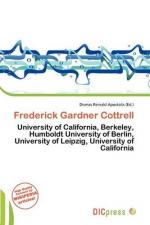|
This section contains 389 words (approx. 2 pages at 300 words per page) |
World of Invention on Frederick Gardner Cottrell
Frederick Cottrell was the inventor of the electrostatic percipitator, an important device that removes dust and smoke particles from gases. It is mainly used to collect polluting emissions from industrial plants--in the United States alone, more than 100 million tons of otherwise-polluting particles are captured by this device each year.
The concept of the electrostatic precipitator was first described in 1824 by a German mathematics teacher, M. Hohlfeld. Cottrell began his work to actually build such a device in 1906, while a professor of chemistry at the University of California at Berkeley. He succeeded four years later, and his device was quickly adopted by heavy industries confronted with strict new regulations for air pollution control at the time.
The electrostatic precipitator uses electric forces to remove the harmful particles from a gas. The dust and smoke particles become charged, or ionized, after the "dirty" gas is passed through a high voltage discharge. A charged electrode or electrified plate of the opposite charge as the particles then attracts the particles out of the gas and onto the plate. The deposited particles are removed from the plate by washing or scraping.
The electrostatic precipitator was a quick success and was adopted by smelting and sulfuric acid industries, and cement plants. It was used to remove tar from coke-oven gases, to clean the air in air-conditioning systems, to remove acid fumes in refineries and chemical plants, to remove fly ash from the released gases of large coal-burning power plants, to remove smoke from air (as in some household air purifiers), and to recover specks of valuable metals like copper and tin.
Cottrell believed that the proceeds from inventions should be used to fund further research, and so in 1912 he created the nonprofit Research Corporation and gave his electrostatic precipitator patents to the company. The significant earnings from these patents were eventually used to fund research in rockets, particle accelerators, and a very early form of the laser called a maser.
In 1911 Cottrell joined the United States Bureau of Mines, where he supervised work on the recovery of helium from gas wells. In 1922 he worked for the Department of Agriculture, contributing to the production of ammonia for fertilizers. Later in his life he became a consultant. Cottrell was an early advocate of the cooperation of international scientists, as well as the universal language Esperanto.
|
This section contains 389 words (approx. 2 pages at 300 words per page) |


